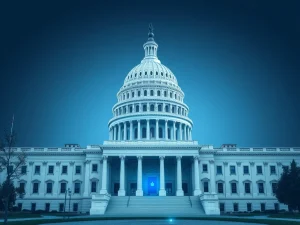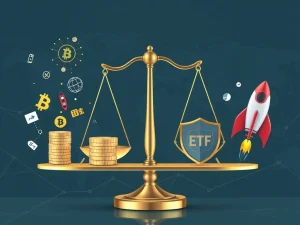Explosive Stablecoin Adoption: US Bills & Japan’s Open Arms Signal Crypto Revolution

The world of stablecoins is heating up! As we navigate the ever-evolving cryptocurrency landscape, stablecoins are taking center stage. From critical legislative movements in the United States to Japan’s progressive regulatory approach, and even turbulence in Europe, it’s clear that stablecoin adoption is a major trend shaping the future of digital finance. Are you ready to dive into the key developments driving this surge and understand what it means for the crypto market and beyond?
Why is Stablecoin Adoption Accelerating Globally?
Several factors are contributing to the increasing stablecoin adoption we’re witnessing worldwide. Let’s break down the key drivers:
- Regulatory Clarity in the US: After navigating a complex regulatory environment, the US is finally taking concrete steps. Key bills are progressing through Congress, aiming to establish clear ground rules for stablecoins. This newfound clarity is fostering confidence and paving the way for wider acceptance.
- Japan’s Open and Welcoming Approach: In contrast to some regions, Japan is adopting a proactive and open stance towards stablecoins. This welcoming environment is encouraging innovation and attracting businesses eager to leverage stablecoins for various applications.
- Safe Haven in Uncertain Markets: Amidst economic uncertainties and geopolitical tensions, stablecoins are increasingly perceived as a safe harbor for capital. Investors are flocking to the stability offered by these dollar-pegged cryptocurrencies, driving up their adoption.
- Demand for Digital Payments: The inherent efficiency and speed of stablecoins make them attractive for digital payments. As businesses and consumers seek faster, cheaper, and more accessible payment solutions, stablecoins are emerging as a viable alternative.
US Bills Pave the Way for Mainstream Stablecoin Adoption
The United States is making significant strides in regulating stablecoins. The STABLE Act, having cleared a crucial hurdle in the House Financial Services Committee, is poised for a full House vote. This bill is a landmark effort to establish a regulatory framework for stablecoins, specifically those pegged to the US dollar.
Key Provisions of the STABLE Act:
- Payment Ground Rules: The act aims to define clear rules for the use of stablecoins in payment systems, providing legal certainty for businesses and users.
- Dollar-Pegged Stablecoin Framework: It establishes a framework specifically for stablecoins backed by the US dollar, addressing concerns around reserves and stability.
- Disclosure Requirements: The bill mandates disclosure provisions for stablecoin issuers, enhancing transparency and accountability within the market.
While the STABLE Act is gaining momentum, it’s not without its critics. Representative Maxine Waters has voiced concerns, highlighting potential benefits for projects like Donald Trump’s stablecoin venture and raising questions about the broader implications for taxpayers. However, many industry experts view these regulatory efforts as essential to bring crypto regulation into the mainstream and unlock its full potential.
Japan’s Open Arms: A Hub for Stablecoin Innovation?
While the US navigates its regulatory path, Japan is taking a different approach, signaling a strong endorsement for Japan stablecoin adoption. Financial authorities are expressing support for stablecoin transactions, and major financial players are moving to embrace this technology.
Key Developments in Japan:
- SBI VC Trade to Support USDC: The crypto arm of financial giant SBI Group is set to offer support for Circle’s USDC stablecoin, indicating a significant step towards mainstream integration.
- Regulatory Support: Japan’s Financial Services Agency Commissioner Hideki Ito has publicly voiced support for stablecoin transactions, creating a positive regulatory climate.
- Industry Collaboration: Leading Japanese firms like Sumitomo Mitsui Financial Group (SMBC) are collaborating with blockchain companies to develop and commercialize both dollar and yen-backed stablecoins within Japan.
This proactive stance positions Japan as a potentially thriving hub for stablecoin innovation and adoption, attracting businesses and investment in the digital asset space.
EU’s MiCA: Stricter Regulations Impact Stablecoin Listings
Across the Atlantic, Europe presents a contrasting picture. The EU’s Markets in Crypto-Assets (MiCA) regulatory package, while aiming to provide comprehensive crypto regulation, has led to a stricter environment for stablecoins. This has resulted in exchanges like Binance and Kraken delisting certain stablecoins that do not meet MiCA’s compliance standards.
MiCA’s Impact on Stablecoins:
- Delistings and Restrictions: Major exchanges have delisted or restricted trading of stablecoins like USDT, PYUSD, and others in the EU region due to MiCA compliance requirements.
- Focus on Compliance: The regulations are pushing exchanges and stablecoin issuers to prioritize compliance, leading to potential shifts in available stablecoin options for European users.
- Transition to Compliant Assets: Exchanges are encouraging users to convert to MiCA-compliant stablecoins, signaling a move towards a more regulated stablecoin market in Europe.
While MiCA aims to protect consumers and ensure market integrity, its stricter approach contrasts with the more welcoming environments in the US and Japan, highlighting the diverse global regulatory landscape for stablecoins.
The Road Ahead for Stablecoins: Growth and Regulatory Scrutiny
Stablecoin adoption is clearly on an upward trajectory. Fueled by regulatory developments in key regions like the US and Japan, and driven by the inherent benefits of stablecoins in payments and as safe-haven assets, their role in the crypto ecosystem is only set to expand. However, the path forward is not without its challenges.
Challenges and Considerations:
- Regulatory Divergence: The varying regulatory approaches across different jurisdictions, as seen between the EU, US, and Japan, create complexities for global stablecoin issuers and exchanges.
- Depeg Risks: Events like the recent FDUSD depeg highlight the inherent risks associated with stablecoins, emphasizing the need for robust reserve management and transparency.
- Political Scrutiny: Stablecoins, particularly those linked to political figures, face increased political scrutiny and potential regulatory hurdles.
Despite these challenges, the fundamental value proposition of stablecoins – stability, efficiency, and accessibility – positions them for continued growth and increasing integration into the broader financial system. As regulatory frameworks mature and market participants adapt, stablecoins are poised to play an even more critical role in the evolution of digital finance.
Conclusion: Riding the Wave of Stablecoin Revolution
The stablecoin adoption story is unfolding rapidly. From legislative developments in the US to Japan’s open embrace and the regulatory shifts in Europe, the global landscape is dynamic and full of potential. As stablecoins navigate regulatory scrutiny and market fluctuations, their fundamental strengths suggest a bright future. Are you ready to witness the full impact of the stablecoin revolution on the financial world? The journey has just begun, and the opportunities are immense.









